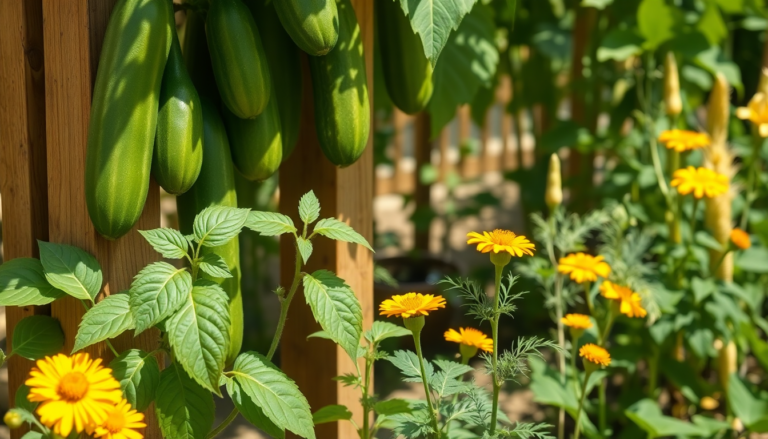Argomenti trattati
Cucumber cultivation is a delightful way to spice up any vegetable garden, thanks to its crisp texture and refreshing taste. But did you know that the company cucumbers keep can play a significant role in their growth and health? Companion planting is a time-honored technique where different plants are grown together, enhancing growth, deterring pests, and even improving flavor. By understanding which plants complement cucumbers, you can create a thriving ecosystem that not only benefits them but also elevates the entire garden environment.
Understanding Companion Planting
Companion planting is more than just an old gardening myth; it’s a science rooted in the fascinating principles of plant interactions. Various plants can form symbiotic relationships that lead to improved health and productivity. Some can provide physical support, while others might enhance nutrient availability or repel pests. For example, tall plants can offer shade, legumes can fix nitrogen in the soil, and certain flowers can attract beneficial insects. According to experts, when strategically placed, these plants can result in a flourishing garden.
When it comes to cucumbers, choosing the right companions can significantly impact their success. While some plants cohabitate peacefully, providing mutual benefits, others may compete for resources or introduce diseases that can hinder cucumber growth. So, how do you identify both the beneficial partners and potential nemeses when planning your garden layout?
Top Companion Plants for Cucumbers
There’s a variety of plants that can thrive alongside cucumbers, enhancing their growth while also keeping pesky insects at bay. Here’s a closer look at ten of the best companions:
- Radishes: Known for their pest-repelling qualities, especially against cucumber beetles, radishes grow quickly and can be harvested before cucumber vines take over. Plus, their tap roots help aerate the soil, promoting healthier root systems.
- Marigolds: These bright flowers are not just eye candy; they also serve as natural pest deterrents. Their scent repels nematodes and aphids, while attracting pollinators that are essential for fruit set in cucumbers.
- Dill: This herb acts like a magnet for beneficial insects, including ladybugs that feast on pests. Plus, dill adds a lovely flavor to summer dishes, making it a delightful companion both in the garden and the kitchen.
- Beans: Both bush beans and pole beans are fantastic choices as they fix nitrogen in the soil, which is particularly beneficial for heavy feeders like cucumbers. Just remember to plant them with enough spacing to avoid competition.
- Sunflowers: Their towering presence not only provides natural trellising for climbing cucumbers but also attracts pollinators and offers some afternoon shade, which can help prevent overheating in hot climates.
- Lettuce: This fast-growing crop thrives in the partial shade of cucumber vines and acts as a ground cover, keeping the soil cool and moist—ideal conditions for cucumber roots.
- Celery: Known for its pest-repelling properties, celery can improve the flavor of nearby crops and works well with cucumbers due to its slower growth rate.
- Carrots: These root vegetables grow deep in the soil and won’t compete much with cucumber vines, making them excellent underground companions that help improve soil structure.
- Borage: An herb that attracts bees and beneficial pollinators, borage is also believed to deter pests like hornworms, making it a fantastic companion for cucumbers.
- Cilantro: This herb not only attracts beneficial insects but also enhances the health of nearby plants, creating a more vibrant garden ecosystem.
Avoiding Nemesis Plants
While many plants can support cucumber growth, others may hinder it. For example, planting cucumbers near potatoes is a no-go as they compete for nutrients and can share diseases. Similarly, sage can stunt cucumber growth, while melons and squash might attract similar pests, increasing the risk of disease spread. Understanding these interactions is crucial for maintaining a healthy garden ecosystem. By carefully selecting companion plants, you can significantly enhance the resilience and productivity of your cucumber crop.
In summary, companion planting offers an innovative way to maximize cucumber yields while fostering a vibrant garden environment. By strategically selecting compatible plants, you can ensure your cucumbers thrive while enjoying the benefits of a diverse and productive garden. So, are you ready to embark on your gardening adventure?

